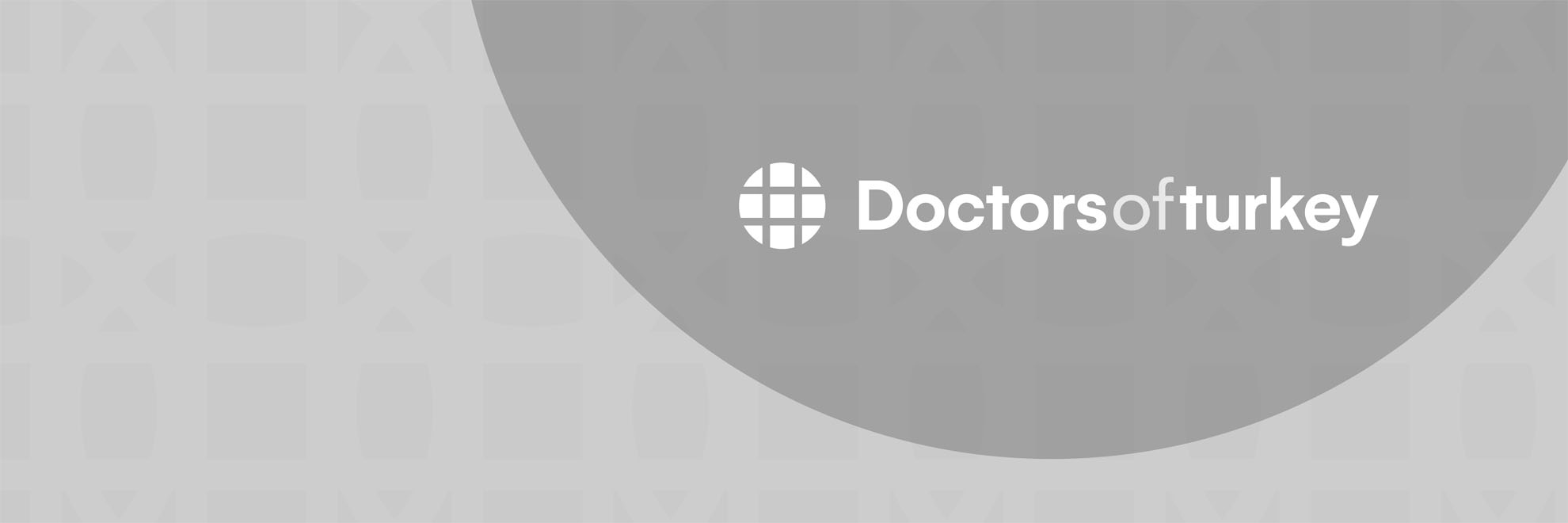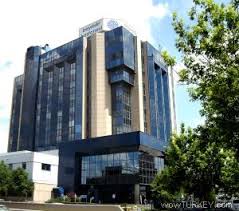

The colored part of our eye is named iris. There is a transparent, watch-glass shaped cornea layer outmost which covers it. The orifice in the middle of the iris is called pupil. The white layer of the eye is sclera layer and the transparent membrane structure which covers it outmost is conjunctiva. There is a crystalline lens in the back of the iris.
The liquid in the form of a gel which we call vitreous fill the inside of the eyeball. The nerve fiber layer which covers this orifice is called retina. Right below it, there is the vein layer which we call the choroid. At the back of the eye that we can see through the lens, there is an optical disc in which our visual nerve appear is observed as round, in pink and white color. Also, there is a section called the macula which is darker in color than the environment and enables us to see in detail. The rays that reach our eyes, fall into the retina region after passing through the tears, cornea and lens. From here, they are transmitted to the visual cortex in our brain through nerve fibers. The stimuluses arranged here become a meaningful image. For a good vision, all these structures and ocular muscles surrounding the eyeball should be healthy.
Corneal Diseases: Diseases related to anterior segment structures of the eye such as keratoconus, corneal infections, allergic keratoconjunctivitis, corneal transplantation, dry eye, pterygium are evaluated and treated. Examination methods such as dry eye examination tests and tear osmolarity, specular microscopy, cornea topography, anterior segment photography, anterior segment OCT (tomography), corneal pachymetry are used in evaluation of the diseases. Corneal transplantation surgery, cross-linking treatment in keratoconus, autologus serum and punctal plug treatments, amniotic membrane graft surgery, stem cell transplantation, sutureless pterygium surgery are performed.
Cataract and Refraction Surgery: The most appropriate lens and method are determined by detailed evaluating the patients before the operation. Cataract surgery is performed by phacoemulsification method by using drop anesthesia, 2 mm incision and the latest technology devices. In our hospital, cataract surgery method is performed with the help of Femtosecond Laser. In this method, operation is nonsurgically performed, astigmatism correction can be performed during the operation. During the operation; long, middle and close distance corrections are performed on the patients whose eyes are suitable for it, by using speciality lenses (trifocal and astigmatic lenses). The latest technological devices (IOL Master 700) are used in lens measurement. Pupil repair is also performed in required patients. Cataract surgery is successfully applied in patients with small pupils, diabetes, macular degeneration, uveitis and infant patients as well. Where necessary, YAG Laser Capsulotomy is performed in patients.
Glaucoma: All our patients are evaluated from the point of glaucoma during routine examination. The patients who have been diagnosed with glaucome are regularly checked, are detailedly and regularly followed-up by performing the visual field inspections, evaluation of the angle via OCT and Scheimflug topography, glaucoma OCT, photographic follow-up and pachymetry inspections of the optic disc in patients if necessary. Glaucome surgery, glaucoma implants and YAG laser iridotomy are applied in patients with the need of treatment.
Retina: The diseases related to posterior segment structures of the eye such as hypertensive and diabetic retinopathy, retinal decollements, age-related macular degenerations (Yellow Spot Disease), intraocular bleedings are evaluated. Fluorescein and indocyanine angiography examinations, ultrasonography, retinal OCT, intravitreal injections and laser treatment are performed.
Oculoplastic: Diagnosis and treatment of diseases related to eyelids and tear ducts are performed. Operations are performed for the removal of eyelid bulks and tear duct congestion treatment.
Strabismus: Diagnosis, follow-up and treatments of strabismus and amblyopia that especially occurs in childhood and mostly progress due to injury defects are performed.
Neuroophthalmology: Eye diseases related to neurologic diseases such as myasthenia gravis, thyriod-related ocular involvements, optic neuritis, eye migraine and other neurologic problems are evaluated. Imaging methods such as MR and CT, visual field test, fluorescein angiography, OCT, color vision tests, the tests evaluating the eye movements are used.
Uvea: Diagnosis, follow-up and treatment of the defluxion and immunological diseases occuring in the parts of the eye called uvea (iris, sclera and choroid) are performed and the underlying disease is detected. Systemic treatment, intraocular drug injections and in patients who need, cataract and galucoma surgery are performed.
Contact Lens: Contact lenses can be used in all refractive disorders such as myopia, hypermetropia and astigmatism and also in keratoconus, bullous keratopathy, persistent epithelial defect cases and some other diseases. Colored, colored-corrective and transparent contact lenses for aesthetic purposes or correction of refractive disorders are available.
Operations and Examination Methods
Operations
Cataract Surgery (Phaco Method)
Femtosecond Assisted Cataract Surgery
Trifocal (Long/Mid/Close Range Focused Intraocular Lens Applications)
Astigmatic Intraocular Lens Applications
Glaucoma Surgery
Corneal Transplantation (Full-Thickness and Deep Lamellar Keratoplasty)
Pterygium Surgery, Sutureless Autograft and Tissue Adhesive Methods are used.
Crosslinking Treatment in Keratoconus
Crosslinking Treatment in Corneal Infections
Operations for Lump in Eyelid, Eyelid Deformities and Tear Ducts
Chalazion, Eyelid Lesions and Hordeolum (Stye) Operations
Corneal and Conjunctival Repairs
Amniotic Membrane Graft Surgery
Limbal Stem Cell Operation
Yag Laser Capsulotomy, Iridotomy Applications
Punctal Plug Placement
Intraocular (Intravitreal) Drug Applications
Intraocular (Intravitreal) Implant Applications
Examınatıon Methods
Fundus Florescein Angiography
Indocyanine Green Angiography
Anterior Segment and Colored Fundus Photography
Infrared Fundus Photography
Computerized Visual Field Test
Corneal Topography
Specular Microscopy
Yag Laser
Argon Laser
Corneal Pachymetry (Thickness Measurement of Cornea)
Glaucoma and Retina OCT
B Scan Ultrasonography
Optical Biometry Intraocular Lens Measurement
Tear Osmolarity Measurement
Frequently Asked Questions
What is cataract? What are the operation methods?
Cataract is the opacification of the eye lens which is right behind the coloured part (iris) of the eye by losing its transparency.
In addition to the elderly, in can be seen at early ages, even in newborn babies. Cataract progressess slowly. After a while person with cataract discovers a grayness or whiteness in the pupil, feels that the vision is increasingly impaired and reduced.
How is the treatment of refractive disorders performed with laser? Is this process applicable to every eye? Are there any risks of this surgery?
With laser treatment, surgical treatment for all injury defects can be performed (myopia, hypermetropia, astigmatism). The cases with the best success rates are simple myopia cases. In this surgery, the aim is to reduce the eye number as much as possible. It’s not possible in every case to entirely eliminate your need for eyeglasses or contacts. Corneal thickness, the degree of eye elongation have an influence on this. Additionally, all anatomical structures of our eyes should be healthy. The patient who demands to be operated should be performed a general eye examination, the corneal thickness should be measured and corneal topography should be performed firstly. If the eye and current refractive defect are suitable for the operation, surgery is performed. As it is in every surgery, the complications such as infection, continuation or deformation of refractive error, blurring of the cornea and decrease in night vision may be encountered. These are seen in a very small proportion and sometimes operation repetition may be required.
What are the refractive defects? Why do we wear hyperopia glasses over the age of 40?
Astigmatism occurs as a result of refraction of the light on different axes. It may be myopic or hypermetropic astigmatism. Myopia is basically the case of shortsightedness because the image falls on the front part of the retina instead of falling on the retina. In hypermetropia, on the contrary, the image falls on the back part of the retina and is basically is the case of longsightedness. Age-related
longsightedness occurs at the age of 40 approximately and results from the changes in the structures of eye which provide near harmony. It increases along with the age and then stops.
What is diabetic retinopathy, how its treatment is performed?
In diabetes, diabetes mellitus in other words, involvement in the eye depending on the type, duration of the disease, blood glucose value may be seen. It usually progresses sneakily. After being diagnosed with diabetes, patients should annually see the ophthalmologist for comprehensive dilated eye exams.
What is yellow spot disease (age-related macula degeneration) ?
It is the damage in the area at the back of the eye that we call yellow spot and mainly responsible for the vision. The risk of this disease increases along with the environmental factors such as age, sun exposure and smoking. It has symptoms such as fractured, slanted, larger or smaller vision.
What is Glaucoma (Eye Tension Disease)?
This is the damage which occurs autogenously or due to the increase of the pressure in the eye. As it may result in blindness, it should be diagnosed and treated at the right time. It is appriopriate to measure it once in a year since it is a sneaky disease. The risk of glaucome increases with the age.
There is no image attached to this service in this language yet.
Henüz bu hizmete ait bu dilde eklenmiş bir video bulunmamaktadır.





















